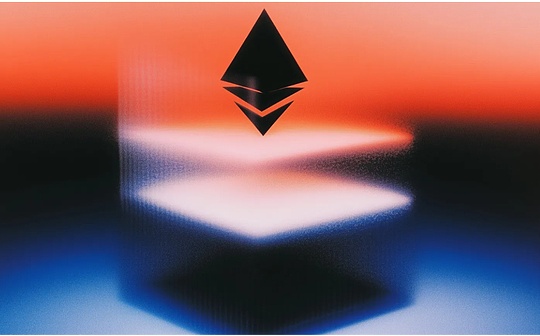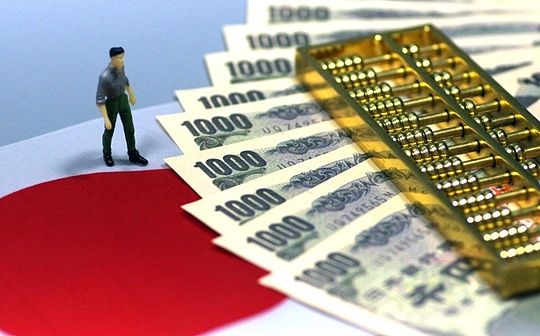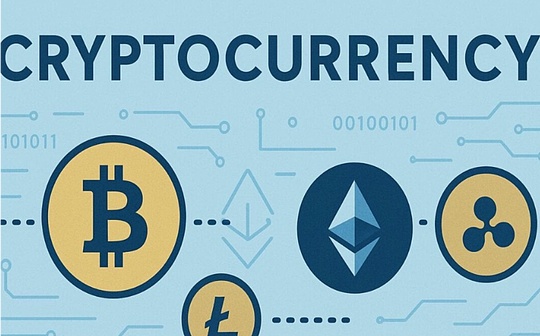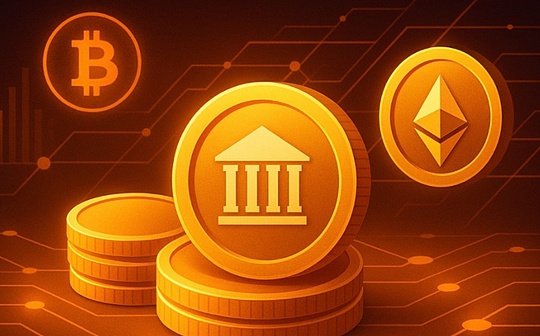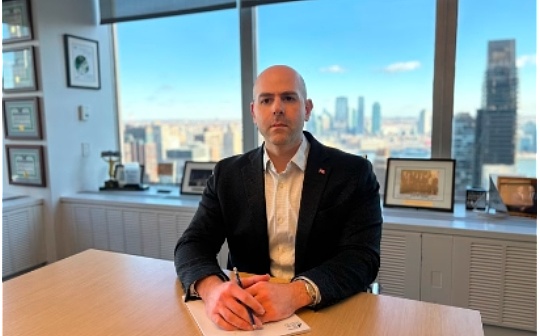
Note: Since Trump took office again, he has introduced a series of incredible economic policies, especially the “reciprocal tariff” measures to impose tariffs on most countries around the world announced on April 2.According to market rumors, these policies are all from the thought economist Stefen Miran, who is now chairman of the White House Economic Advisory Committee.In November 2024, Stefen Miran wrote a so-called “Milan Report”: “User Guide to Reconstructing the Global Trade System”.The report is considered to be the behind-the-scenes theoretical guidance of a series of Trump’s economic policies.On April 7, 2025, the official website of the White House published Stefen Miran at a recent eventLatest speech, seems to be defending Trump’s “reciprocal tariffs”.AIMan@bitchain Vision Compilation.
White House Economic Advisory Committee Chairman Stephen Milan speaks at a Hudson Institute event
Today, I want to talk about the situation where the United States provides the world with what economists call “global public goods.”First, the United States provided a security umbrella, creating the most peaceful era in mankind’s history.Secondly, the United States provided US dollars and U.S. Treasury bonds, which allowed the establishment of a global trade and financial system and supported the most prosperous era in mankind’s history.
It’s cost us to offer both.In terms of national defense, our men and women in military uniforms risk heroic risks to make our country and the world safer, defending our freedom generation after generation.We impose high taxes on hard-working Americans to fund global security.In terms of finance, the dollar’s reserve function has led to a continuous distortion of the currency and, together with unfair trade barriers in other countries, has created an unsustainable trade deficit.These trade deficits have severely hit our manufacturing industry, many working-class families and their communities, but are only to facilitate trade between non-Americans.
Let me explain that by “reserve currency” I mean all the international functions of the US dollar, including private savings and trade functions.I often give an example of this, when private institutions in two different countries trade with each other, due to the United States’ status as a reserve currency issuer, transactions are usually denominated in US dollars.This trade means that savings exist in the form of dollar securities, usually in U.S. Treasury bonds.Therefore, Americans are paying not only for their own peace and prosperity, but also for non-Americans.
President Trump has made it clear that he will no longer tolerate other countries taking our free rides in national security or trade and taking advantage of us.During the first hundred days of his administration, the Trump administration has taken decisive action to readjust our defense and trade relations and put Americans in a more fair position.The President promises to rebuild our broken industrial base and strive for the terms of trade that puts American workers and businesses first.
I’m an economist, not a military strategist, so I’ll talk more about trade than defense, but the two are closely linked.To illustrate the truth, imagine there are two foreign countries, such as China and Brazil, who trade with each other.Both countries lack credibility, liquidity and convertibility, making trade between them challenging.However, because they can be traded in US dollars backed by U.S. Treasury bonds, they are free to trade with each other and flourish.This kind of trade can happen because the U.S. military power ensures our financial stability and the credibility of our lending.We cannot take the U.S. military and financial dominance for granted; the Trump administration is determined to maintain these positions.
But our financial dominance comes at a price.While demand for the US dollar does keep our lending rates at low levels, it also keeps the money market in a distortion state.This process puts an undue burden on our businesses and workers, making their products and labor uncompetitive on the global stage, causing our manufacturing workforce to drop by more than a third since its peak, and our share of world manufacturing output has dropped by 40%.
We need to be able to produce products in our country, as we saw during the COVID-19 pandemic, when many of our supply chains would not be able to sustain without relying on our biggest rival, China.Obviously, we should not rely on our biggest rivals to provide critical equipment that keeps our people safe.Nor should we allow our biggest rivals to gain such enormous benefits from the international security and financial architecture we contribute to build.
There are some other adverse side effects of providing reserve assets.Other countries may purchase our assets to manipulate their own currency to keep their export products low.As a result of this, they ended up injecting a lot of money into the U.S. economy, exacerbating its vulnerability and triggering a crisis.For example, in the years before the 2008 financial crisis, China and many foreign financial institutions increased their holdings of U.S. mortgages, fueling the real estate bubble, which put hundreds of billions of dollars in credit into the real estate sector without considering whether these investments were justified.China has played an important role in triggering the global financial crisis.It took us nearly a decade to recover until President Trump brought us back on track during his first term.
In my opinion, to continue to provide these two global public products, it is necessary to improve the responsibility sharing mechanism at the global level.If other countries want to benefit from the U.S. geopolitical and financial umbrella, they need to do their part and pay the expenses they should bear.These costs cannot be borne by ordinary Americans who have already paid a lot.
The best result is that the United States continues to create global peace and prosperity and continues to be a reserve currency issuer, where other countries can not only benefit from it, but also participate in sharing costs.By improving the responsibility sharing mechanism, we can enhance our ability to resist risks and maintain global security and trading systems in the coming decades.
In addition, it is not only about fairness, but also about ability.We are being besieged by hostile forces who are trying to weaken our manufacturing and defense industrial bases and disrupt our financial system; if our manufacturing capacity is hollowed out, we will not be able to provide national defense security and will not continue to provide reserve assets.The president has made it clear that the United States is committed to continuing as a reserve currency issuer, but that system must become more fair.We need to rebuild our industry to demonstrate the strength needed to maintain the status of the reserve currency, and we need to be able to pay for it.
What forms can be taken to share responsibility?There are many options, here are some ideas:
First, other countries can accept tariffs on products they export to the United States without retaliation, which can provide revenue to the U.S. Treasury Department to fund the provision of public products worldwide.The key is that retaliation will only intensify rather than improve the sharing of responsibility, making it harder for us to afford the global public goods.
Second, they can stop unfair and harmful trade practices by opening up markets and increasing imports from the United States;
Third, they can increase defense spending and source more products from the United States, buy more American-made goods, reduce the burden on our military, and create jobs in the United States;
Fourth, they can invest in and build factories in the United States.If they make products in the United States, they don’t face tariffs;
Fifth, they can pay directly to the U.S. Treasury Department to help us fund public goods around the world.
Tariffs deserve special attention.Most economists and some investors believe that tariffs are counterproductive at best, and at worst, they are extremely harmful.They were wrong.
One reason the economic consensus on tariffs is so wrong is that almost all economists use to study international trade models, either assuming that there is no trade deficit at all, or assuming that the trade deficit is short-lived and will be quickly corrected by monetary adjustments.According to the standard model, the trade deficit will lead to the depreciation of the US dollar, thereby reducing imports, increasing exports, and ultimately eliminating the trade deficit.If this is the case, tariffs may not be necessary, because trade will balance itself over time, and intervening through tariffs will only make the situation worse, according to this view.
However, this view is inconsistent with reality.The current account deficit in the United States has been ongoing for fifty years, and has expanded dramatically in recent years, from about 2% of GDP during the first term of the Trump administration to a high of nearly 4% of GDP during the Biden administration.Moreover, during this period, the US dollar not only did not depreciate, but appreciated!
The long-term situation is already in front of us, and these models are wrong.One reason is that they do not take into account the situation of the United States as a global reserve currency issuer.The status of reserve currencies is important, and because the demand for the US dollar has been strong, even after fifty years, the strength of the US dollar has made it impossible for international capital flows to balance.
Some recent economic analysis takes into account the possibility that the trade deficit may persist and will not automatically return to balance, which is more in line with the reality of the United States.These analyses show that by imposing tariffs on exporting countries, the United States can improve its economic conditions, increase fiscal revenue, and even if the other party retaliates in a comprehensive manner, it will cause huge losses to the countries levied.
In this sense, an analysis of what economists call “targeting of tariff burdens” shows that a large part of the tariff burden is “bearable” by the countries where we collect tariffs.Those countries with large trade surpluses are quite inflexible—they can’t find other sources of demand to replace the U.S. market.Instead, they have no choice but to export, and the United States is the world’s largest consumer market.In contrast, the United States has many alternatives: we can produce products at home, or we can buy products from countries that treat us fairly, rather than from countries that take advantage of us.This difference in bargaining power means that other countries will eventually bear the tariff costs.
Between 2018 and 2019, China took the cost of President Trump’s historic tariffs through currency devaluation, which meant that Chinese people were getting poorer and their purchasing power on the global stage decreased.The tariff revenue paid by China is used to fund President Trump’s tax cuts to American workers and businesses.This time, tariffs will help fund tax cuts and reduce fiscal deficits.
Tax cuts to the American people, funded in part by foreigners, will bring economic growth, vitality and unprecedented opportunities, ushering in a new golden age for President Trump.Reducing fiscal deficits will help lower U.S. Treasury bond rates, which in turn lower mortgage rates and consumer credit card rates, and stimulate economic prosperity.
It should be noted that tariffs are imposed not just to increase fiscal revenue.For example, the president’s reciprocal tariffs aim to address tariff and non-tariff barriers and other forms of unfair competition, such as currency manipulation, dumping and subsidies, to gain unfair advantages.Increased fiscal revenue is a good side effect, and if partly used to reduce taxes, it can effectively enhance competitiveness and promote U.S. exports.
The responsibility sharing mechanism can allow the United States to continue to lead the free world in the next few decades.This is not only for fairness, but also for ensuring feasibility.If we do not rebuild our manufacturing industry, we will be unable to provide the guarantees needed for our own security and support the financial markets.The world can still enjoy the U.S. defense umbrellas and trading systems, but must start paying them as much as they deserve.Thank you everyone, I’m happy to answer some questions.




